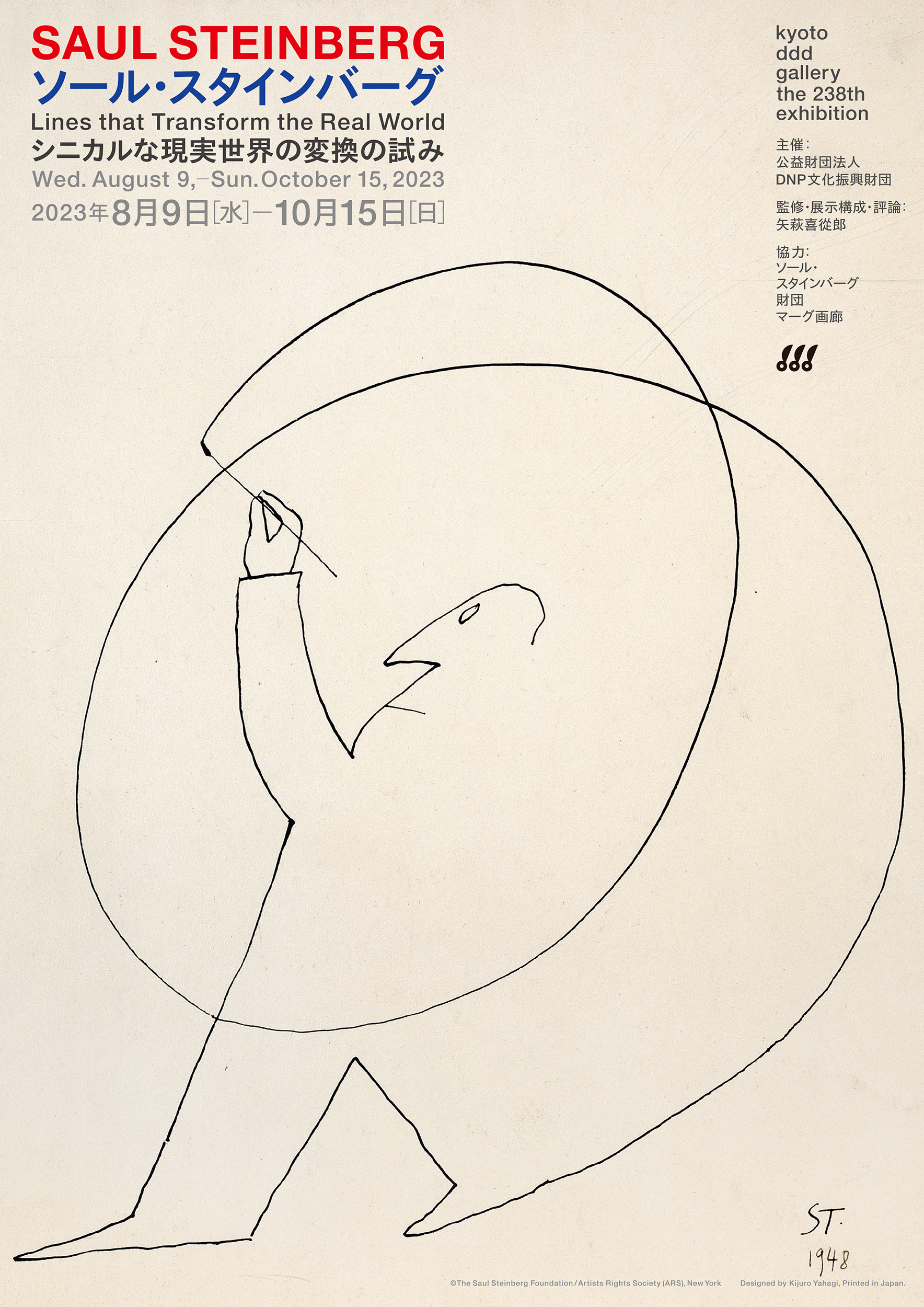
8/9-10/15 11:00-19:00 ※9/30は除く※土日祝は18:00まで 月休(祝日/振替休日の場合はその翌日)、祝日の翌日休(土日の場合は開館)
It's been 24 years since the passing of Saul Steinberg, one of America's most beloved artists.He is a familiar artist in Japan, and is currently the artist most in need of rediscovery and reappraisal.
He sees drawing as a ``method of reasoning on paper,'' and explores the gap between the mythical ideals of America and reality, and the eerie and comical absurdities, such as the mixture of the old and the new, the graceful and the ferocious. The invisible crevices are depicted in light yet sharp lines, with humor and satire.
He visualized ``invisible lines,'' ``invisible things,'' ``invisible words,'' and ``invisible structures,'' and continued to challenge himself to transform meanings and concepts throughout his life.
``I'm calling on my readers to be complicit,'' says Steinberg, encouraging the viewer to become a party in order to open their eyes to the absurdity of reality.Armed with these thoughts and ideas, Steinberg's sculptures have been featured in numerous newspapers and magazines, including the Italian satirical newspaper Bertholdo and America's leading magazine, The New Yorker, as well as art museums. I turned it into a place of art as clearly as the Picasso painting on the wall.
This exhibition will feature a total of approximately 170 works, including reproductions of his representative works.
Born in 1914 in Rumnik Salato, near Bucharest, Romania.After studying philosophy and literature at the University of Bucharest, he majored in architecture at the Royal Polytechnic University of Milan (now Politecnico di Milano) in Italy, graduating in 1940.
In Milan, he was actively involved in the satirical newspaper Bertholdo, but in 1941 he fled anti-Semitic Italy under the fascist regime and moved to the United States.
During the war, he joined the Navy, and after the war, he settled in New York and began working for The New Yorker magazine. Over the course of more than 50 years, he created 89 covers and more than 1200 interior drawings for the magazine. I worked on it.
With his intelligent and sophisticated style, he revolutionized the world of cartoons and is a leading figure in incorporating graphics into the realm of art (drawing, painting, prints, collage, sculpture, etc.).
In 1946, he was selected for the "14 Americans Exhibition" at the Museum of Modern Art in New York, and in 1952 he held his first solo exhibition at the Parsons-Jannis Gallery in New York, followed by the Mague Gallery in Paris the following year.
In 1978, he had a retrospective exhibition at the Whitney Museum of American Art, and in 2006 he held a major touring exhibition, ``Steinberg: Illuminations.''His works include ``ALL IN LINE'', ``The Art of Living'', ``The Passport'', ``The Labyrinth'', ``The New World'', ``The Inspector'' and many others.In Japan he influenced many manga artists and illustrators such as Fujiko Fujio, Ryohei Yanagihara, and Makoto Wada.